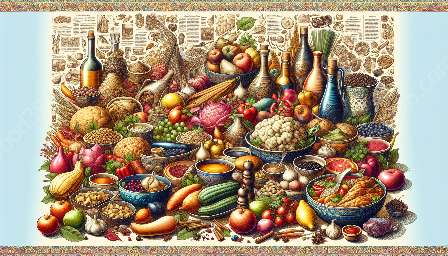Food culture is deeply intertwined with the influence of geographical factors, and one compelling aspect is the prevalence of certain spices in particular cuisines. This article will investigate the intricate relationship between geography and spice usage, exploring how geographical features contribute to the adoption and prominence of specific spices in different regions, and how it shapes the origin and evolution of food culture.
Geographical Factors and Spice Prevalence
Geographical factors such as climate, soil composition, and altitude play significant roles in the availability and cultivation of spices. The unique microclimates and soil conditions in different regions provide ideal growing environments for specific spices, leading to their prevalence in local cuisines. For example, the hot and humid climate of Southeast Asia fosters the growth of spices like lemongrass, galangal, and turmeric, which are essential to Thai and Indonesian cuisines.
Altitude also affects spice cultivation, as certain spices, like cardamom and saffron, thrive in high-altitude regions such as the Himalayas and the Middle East. The influence of geographical factors on spice prevalence extends to the coastal regions, where access to specific seafood and salt is linked to the use of particular spices in traditional coastal cuisines.
Spice Trade Routes and Cultural Exchange
Historical spice trade routes have significantly impacted the prevalence of particular spices in different regions. The Silk Road, for instance, facilitated the exchange of spices like cinnamon, cloves, and pepper between East Asia, the Middle East, and Europe, leading to the incorporation of these spices into the cuisines of these regions. Similarly, the Portuguese exploration of the spice-rich lands of India and Southeast Asia introduced spices like chili peppers and black pepper to European cuisines.
This historical exchange of spices and culinary techniques through trade routes shaped the food cultures of different regions, leading to the integration of exotic spices into local cuisines and the creation of unique flavor profiles. The influence of geography on spice prevalence extends beyond mere availability, encompassing the cultural and culinary exchanges resulting from historical trade routes.
Biodiversity and Culinary Traditions
The rich biodiversity in certain geographical regions contributes to the prevalence of specific spices in local cuisines. The Mediterranean region, for example, is known for its abundant olive groves, herb gardens, and vineyards, leading to the widespread use of olive oil, oregano, and rosemary in Mediterranean cuisines.
Similarly, the aromatic spice blends of India, such as garam masala and curry powder, are a testament to the diverse flora and fauna of the Indian subcontinent. The availability of unique ingredients and spices in specific geographical regions has shaped the culinary traditions and flavor profiles of these areas, with each region developing its own distinctive spice palette.
Impact on Food Culture and Identity
The prevalence of specific spices in particular cuisines is integral to the identity and cultural heritage of these regions. The use of spices in traditional dishes not only imparts distinct flavors but also reflects the historical, social, and economic significance of these spices to local communities. For example, the significance of saffron in Spanish cuisine is deeply rooted in the cultural identity of the region, with saffron cultivation playing a pivotal role in the local economy and culinary traditions.
Furthermore, the geographical factors that contribute to the prevalence of specific spices have shaped the regional food culture, influencing cooking techniques, mealtime customs, and festive traditions. The use of spices is intertwined with familial and communal gatherings, religious rituals, and seasonal celebrations, further emphasizing the impact of geography on the evolution and perpetuation of food culture.
Conclusion
Geographical factors significantly contribute to the prevalence of certain spices in particular cuisines, shaping the origin, evolution, and identity of food culture in different regions. Understanding the intricate relationship between geography and spice prevalence provides valuable insights into the diverse flavors and culinary traditions around the world, offering a glimpse into the historical, cultural, and environmental influences that have shaped the global tapestry of food culture.


